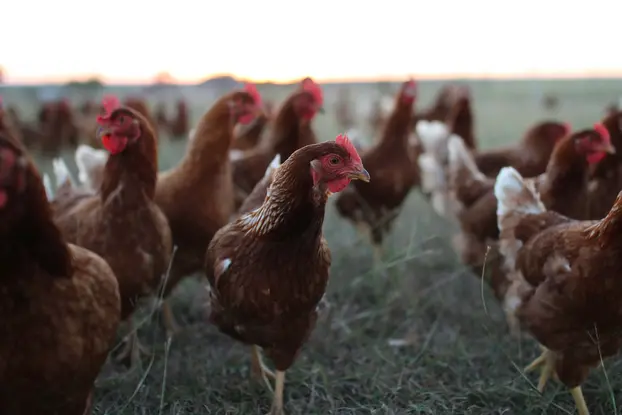Addressing Chicken Welfare in Slaughter Practices
Chickens are the most consumed meat globally, with billions raised and slaughtered annually. While consumer demand for affordable chicken is high, concerns about animal welfare during slaughter remain a critical issue. This article explores the standard practices used in chicken slaughter and the ethical concerns raised by animal welfare organizations.

A Look at Standard Practices
While specific methods vary globally, some common practices in chicken slaughter include:
- Stunning: This aims to render the chicken unconscious before slaughter. Methods like electrical stunning, controlled-atmosphere stunning (CO2), and neck dislocation are used. However, the effectiveness of these methods varies, with some raising concerns about causing pain or distress even if unconsciousness is achieved.
- Shackling and Hanging: After stunning, the unconscious chickens are typically shackled by their legs and hung upside down on a conveyor belt. This process can cause discomfort and potential pain, especially if the stunning wasn't fully effective.
- Slaughter: Automated or manual methods are used to slaughter the hanging chickens, typically involving severing the carotid artery and jugular vein. While swift and efficient, the lack of proper stunning can lead to suffering during this process.
Why These Practices Raise Concerns
Animal welfare organizations, like many concerned individuals, raise ethical concerns about these practices:
- Effectiveness of Stunning: Not all stunning methods are guaranteed to be fully effective. Instances of incomplete stunning can result in conscious chickens experiencing pain and distress during subsequent steps.
- Pain during Shackling and Hanging: Even when stunned, the process of shackling and hanging can cause discomfort and stress due to improper handling or potential regaining of consciousness.
- Lack of Transparency: Limited public access to slaughterhouses raises concerns about the actual conditions and potential for additional suffering beyond documented practices.
The Push for Change
Organizations dedicated to animal welfare advocate for:
- Improved Stunning Methods: Research and implementation of more reliable and humane stunning methods that ensure complete and immediate unconsciousness.
- Alternatives to Shackling and Hanging: Exploring alternative methods for handling unconscious animals that minimize discomfort and potential pain.
- Increased Transparency: Implementing stricter animal welfare regulations and promoting greater transparency in slaughterhouse practices to ensure humane treatment throughout the process.
By raising awareness about these concerns, animal welfare organizations aim to encourage improvements in chicken slaughter practices, promoting better treatment and minimizing suffering for these animals raised for human consumption.
This article provides a brief overview of the issue. It is important to note that the complexities of this topic require further research and understanding of specific regional practices and regulations. However, by acknowledging the concerns raised by animal welfare organizations, we can initiate a conversation about ensuring humane treatment for chickens throughout their lifespan, including the critical stage of slaughter.
